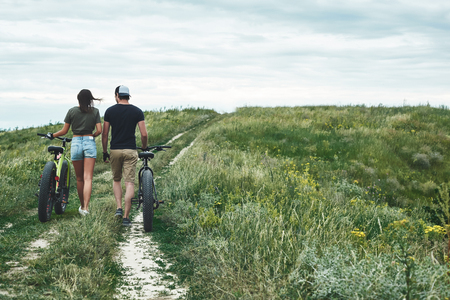Understanding British Walking Conditions
If you are to walk safely across Britain, a good grasp of our unique walking conditions is absolutely vital. Unlike many countries, the UK offers an extraordinary range of terrains: from the craggy peaks of the Lake District and the wild moors of Dartmoor, to rolling Cotswold hills, pebbled beaches in Wales, and ancient woodland footpaths winding through Scottish glens. Each landscape brings its own set of challenges for your feet, ankles, and overall stability. Add to this the famously unpredictable British weather—glorious sunshine one minute, sideways rain the next—and you quickly realise why local knowledge is essential for injury prevention. Wet grass can turn even a gentle slope treacherous; boggy paths demand sturdy boots and careful footing. In short, understanding these ever-changing conditions isn’t just about comfort—it’s your first line of defence against slips, trips, and strains on the trail. Whether you’re a seasoned rambler or new to countryside walks, appreciating how British terrain and weather interact will help you plan ahead, adapt your kit, and walk confidently whatever the forecast.
2. Choosing the Right Kit
When it comes to walking in Britain, selecting the proper kit is not just a matter of comfort but a fundamental step in preventing injuries. The unpredictable British weather, varied terrain—from muddy footpaths in the Cotswolds to rocky ascents in the Lake District—and long distances mean your footwear, clothing, and accessories need careful consideration.
Footwear: Your Foundation for Injury Prevention
The right pair of boots or shoes can make or break your walk. For most British walks, waterproof walking boots with sturdy ankle support are highly recommended. Trainers might suffice for well-maintained urban routes, but for countryside treks, dedicated walking boots offer better grip and reduce the risk of ankle sprains on uneven ground.
| Type of Walk | Recommended Footwear | Key Features |
|---|---|---|
| Urban Parks & Pavements | Comfortable Trainers | Cushioned sole, breathable fabric |
| Coastal Paths & Rolling Hills | Lightweight Walking Shoes | Good grip, water resistance |
| Moorland & Mountain Trails | Ankle-Support Boots | Waterproofing, ankle protection, deep tread |
Clothing: Layer Up for British Weather
Layering is crucial. Start with a moisture-wicking base layer (to avoid chills from sweat), add an insulating mid-layer (like fleece) for warmth, and always carry a waterproof outer shell—rain is rarely far away. Avoid cotton as it retains moisture and can lead to discomfort or even hypothermia on colder days. Trousers should be flexible and quick-drying; jeans are best left at home.
Essential Layers for British Walks:
- Base Layer: Synthetic or merino wool top and bottoms.
- Mid Layer: Lightweight fleece or insulated jacket.
- Outer Layer: Breathable waterproof jacket and trousers.
- Socks: Wool-blend hiking socks to prevent blisters.
- Hat & Gloves: Even in summer, weather can turn chilly.
Accessories: Smart Additions for Safety and Comfort
The right accessories can further reduce injury risks. Trekking poles help with balance on steep or slippery sections and relieve pressure on knees during descents. A small rucksack with adjustable straps distributes weight evenly; pack essentials such as a map, headtorch, blister plasters, water bottle (hydration is often overlooked in cooler climates), and a basic first aid kit. If you’re venturing into remote areas or poor visibility is likely, consider adding a whistle and high-visibility vest to your kit.
Summary Table: Must-Have Accessories for UK Walks
| Accessory | Main Purpose |
|---|---|
| Trekking Poles | Knee support & stability on rough ground |
| Packed Map/Compass (or GPS) | Avoid getting lost in foggy/misty conditions |
| High-Vis Vest/Whistle | Visibility & safety on rural roads or during rescue situations |
| Sunscreen & Lip Balm | Protection against windburn and unexpected sun exposure |
| Bottle of Water & Snacks | Avoid dehydration & maintain energy levels |
| Blister Plasters & Mini First Aid Kit | Treat minor injuries early to prevent escalation |
With these locally-tailored recommendations and kit choices, you’ll be well-equipped to enjoy the best of British walking while reducing your risk of injury—whatever the forecast may bring.

3. Preparing Yourself Before the Walk
Essential Warm-Up Routines
If you’re venturing out for a ramble across the British countryside or through bustling city streets, taking five to ten minutes for a proper warm-up is vital. Start with gentle dynamic stretches—think ankle circles, leg swings, and arm rotations. These movements gradually increase your heart rate and mobilise joints, reducing the risk of strains and sprains on uneven footpaths or cobbled lanes. A brisk walk at a slower pace before upping the tempo is also an excellent way to prepare your muscles for the journey ahead.
Hydration Strategies for All Weathers
British weather is famously unpredictable, so hydration shouldn’t be overlooked even on cooler days. Carry a reusable water bottle and sip regularly rather than waiting until you feel thirsty. If you’re walking for longer periods or tackling challenging terrain like the Lake District fells or Dartmoor’s moors, consider adding an electrolyte tablet to your water. This helps maintain salt balance, especially during warmer spells or more strenuous walks.
Nutritional Tips for Sustained Energy
Your body needs the right fuel for both urban strolls and countryside yomps. Aim to eat a balanced meal one to two hours before setting out—think porridge with fruit or wholegrain toast with eggs. Pack portable snacks such as oat bars, bananas, or unsalted nuts to keep your energy steady throughout the walk. For longer adventures, a flask of tea and a homemade sandwich can turn a simple rest stop into a truly British experience while keeping your spirits (and sugar levels) up.
Local Advice: Plan for the Unexpected
It’s wise to check local weather forecasts and pack accordingly—a lightweight waterproof jacket and an extra layer can make all the difference if the heavens open unexpectedly. Don’t forget to let someone know your route if heading off-grid, and always carry a charged mobile phone for safety. By preparing thoughtfully, you’ll not only prevent injury but also enjoy every step of your British walking adventure.
4. On the Path: Staying Safe and Alert
British footpaths can be delightfully unpredictable, offering everything from rolling hills to narrow country lanes. However, this variety also brings a fair share of hazards that every walker should stay mindful of. Whether you’re on a National Trail or a local bridleway, staying vigilant is essential for injury prevention.
Common Hazards on British Walks
Here’s a quick overview of typical challenges you may encounter while out walking in the UK:
| Hazard | Description | Local Advice |
|---|---|---|
| Uneven Ground | Potholes, roots, loose stones, and muddy patches are frequent along rural and urban paths. | Wear sturdy boots with good grip; watch your footing, especially after rain. |
| Livestock | Cows, sheep, and occasionally horses grazing in open fields crossed by public rights of way. | Keep dogs on leads; avoid startling animals; give them plenty of space. |
| Stiles & Gates | Traditional wooden stiles and kissing gates can be slippery or unstable. | Test stability before crossing; use handrails where available; take your time, especially in wet weather. |
| Sudden Weather Changes | The British climate is famously changeable — sunshine can turn to showers quickly. | Check local forecasts before heading out; carry a lightweight waterproof jacket and hat. |
Navigating the Unexpected
The British countryside is peppered with public rights of way that sometimes cross farmland or skirt busy roads. It pays to be proactive:
- Always close gates behind you: This is not just polite but essential for farm security.
- Stay visible: Wear bright clothing if walking near roads or in misty conditions.
- Listen for approaching vehicles or cyclists: Particularly on shared-use tracks or green lanes.
If You Encounter Livestock
If cattle approach, remain calm and walk steadily away without running. If you have a dog, let it off the lead if threatened — your dog can move faster without you and will likely distract the animals.
Quick Tips for Sudden Weather Changes
- Pack an extra layer in your rucksack even if it looks sunny when you set off.
- Avoid crossing streams or stepping stones during heavy rain as water levels rise quickly.
By keeping alert to these local hazards and following tried-and-tested advice, you’ll enjoy safer and more enjoyable rambles across Britain’s beautiful landscapes.
5. First Aid Know-How for Walkers
When rambling across the British countryside, it’s essential to be prepared for minor mishaps and unexpected emergencies. Having solid first aid knowledge is not just a matter of personal safety but a key part of being a responsible walker in the UK’s varied terrains.
Essential First Aid Kit Contents
No British walker should set out without a well-stocked first aid kit. At a minimum, include plasters (plasters are what we call band-aids), sterile dressings, blister pads, antiseptic wipes, tweezers for removing splinters or ticks, an emergency blanket, and a small pair of scissors. A few paracetamol tablets and antihistamines can also prove invaluable.
Common Walking Injuries
The most frequent issues faced on footpaths are blisters, twisted ankles, cuts and grazes, insect bites, and the occasional nettle sting. Treat blisters early with protective pads; clean and cover wounds to prevent infection; use cold packs or improvise with a damp cloth for sprains; and relieve stings by washing the area and applying antihistamine cream if needed.
Emergency Response Skills
Every British walker should know how to call for help—dial 999 in an emergency—and be able to clearly describe their location. The What3Words app is widely used by UK emergency services to pinpoint your exact position. Familiarise yourself with basic CPR techniques and how to treat shock while waiting for help to arrive.
Local Resources and Training
Consider attending a local first aid course tailored for outdoor enthusiasts—organisations such as St John Ambulance and The British Red Cross offer sessions across the country. National Park visitor centres often provide information about nearest medical facilities and emergency procedures specific to the area you’re exploring.
Preparedness Brings Confidence
By taking these steps, walkers can venture out with greater confidence, knowing they’re equipped to handle common injuries and assist fellow ramblers if needed. Remember: a bit of preparation goes a long way on Britain’s beloved trails.
6. Community Wisdom & Resources
Connecting with Local Walking Groups
One of the most effective ways to prevent injuries while walking in Britain is by tapping into the collective knowledge of local walking groups. Organisations such as The Ramblers, local hiking clubs, and online forums offer not only camaraderie but also practical advice on safe routes, weather-appropriate kit, and navigation skills specific to your region. Joining these groups allows you to benefit from the seasoned experience of regular walkers who understand the nuances of British footpaths and countryside etiquette.
Using British Path Networks
Britain boasts an extensive network of public footpaths, bridleways, and national trails—each maintained and mapped with walkers’ safety in mind. By using resources like Ordnance Survey maps and mobile apps such as OS Maps or Footpath, you can plan routes that match your fitness level and avoid unexpected hazards. Pay special attention to waymarked paths, stiles, and gates; these features are designed to guide you safely through fields, woods, and moorlands while minimising risk.
Leveraging Regional Expertise for Safer Walks
Local councils, visitor centres, and mountain rescue teams across the UK offer valuable information tailored to their unique landscapes. Before setting out, check regional weather forecasts (the Met Office is a reliable source), and consider stopping by a local shop or pub for up-to-date trail conditions. In areas like the Lake District or Scottish Highlands, rangers and park wardens often provide advice on seasonal risks—from slippery limestone pavements to sudden mists—and can recommend safer alternatives if conditions change.
Building Your Support Network
No matter where you walk in Britain—from Cornish coast paths to Yorkshire Dales—embracing community wisdom enriches your experience and enhances your safety. Whether its sharing route tips over a cuppa after a group ramble or picking up a leaflet at the village hall, remember that injury prevention is a shared endeavour. Stay connected, stay informed, and enjoy Britain’s footpaths with greater confidence.


